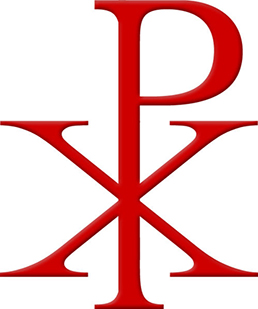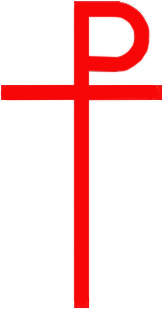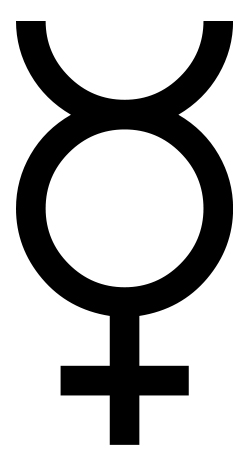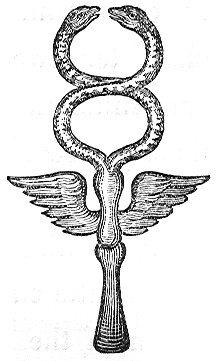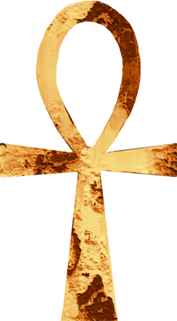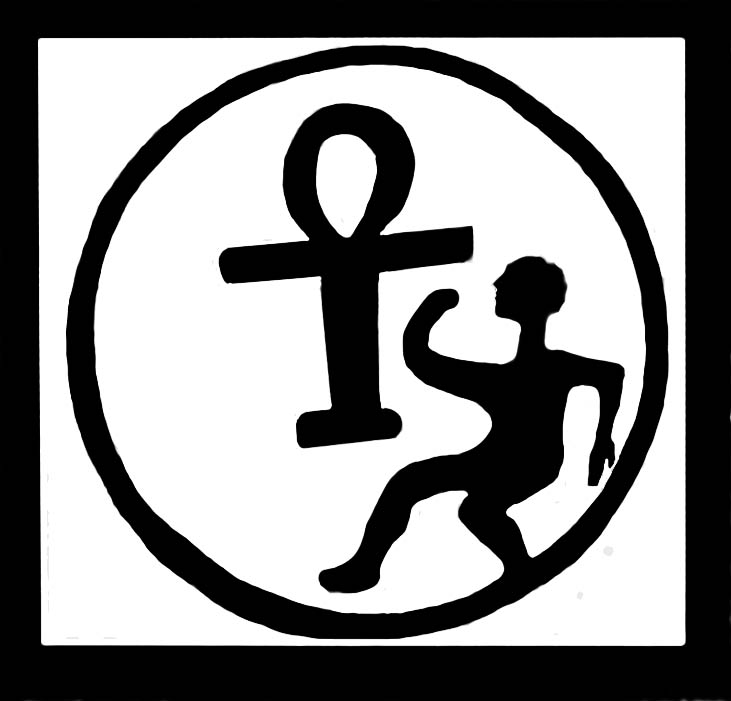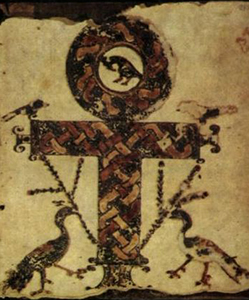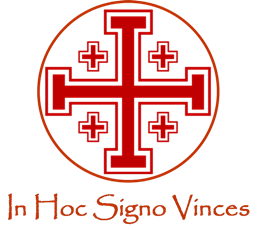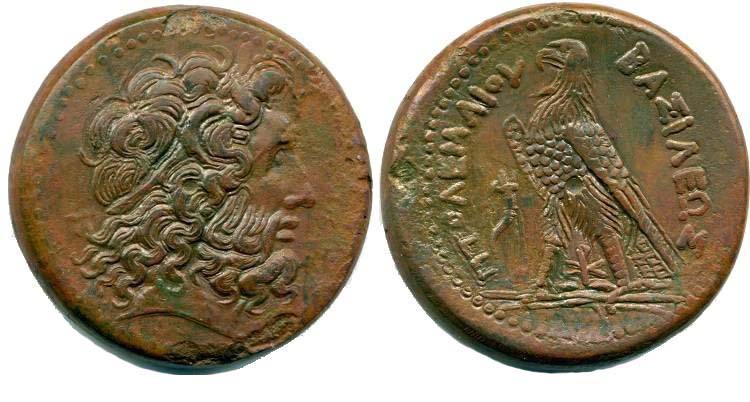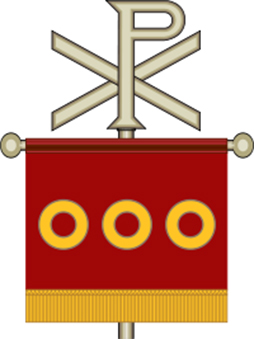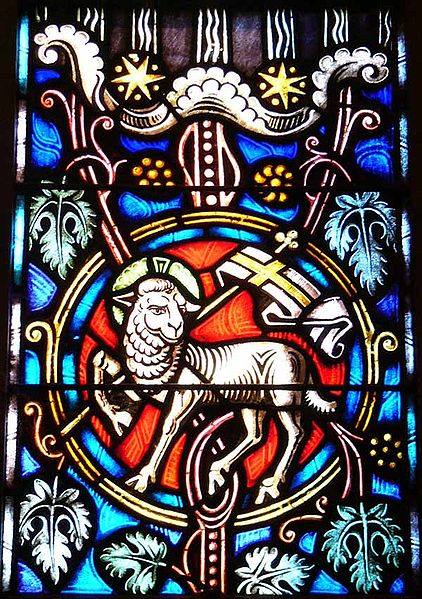Oahspe Study
What is the origin of Christ
Christianity is based on the belief in Christ as savior and redeemer incarnated as a one-time mortal in the form of Jesus of Nazareth. The term "Christ", however, existed long before it came to mean "Messiah"---The Christ of Christianity did not suddenly appear around the time the Christian Jesus was purported to have lived, nor were the connotations of savior new or unique. Much of Christianity's religion, savior, gospel stories, symbols, holidays, rituals and doctrines were borrowed, adopted and adapted from pre-existing religions, philosophies and histories prior to the first known Christians in history (See also Who was Jesus).
The name Christ (Kriste) can be traced back to before the Christian Era. Christ is the anglicized form of the Greek word, Khristos. By comparing Christian gospel writings in various languages, scholars conclude that Khristos is equivalent to the Hebrew word, Messiah which translates as the anointed one; the kingly savior. But Christos as Chrestos was known long before the Christian Era, having connotations of a savior; healer. Chrestos was associated with pre-Christian savior types such as Mithra and Osiris. Analysis of early Christian manuscripts reveals many had the words "Chrest" and "Chrestians" altered to "Christ" and "Christians". This evidence that early / proto Christians referred to themselves as Chrestians and their ideal was Chrestos (which was Greek for "good" and "kind" contrasting with "Christ" which in Greek, came to mean "anointed") traces them back to their Gnostic roots. Oahspe reveals that "Kriste", has even earlier origins in an ancient Ahamic word equivalent to Knowledge. (According to Oahspe, the Ahamic language existed even before ancient Hebrew, stemming from original Fonecian (Phoenetic, Phoenician) and was a precursor of ancient Hebrew and other Semitic languages.) The Gnostics who essentially worshipped "Gnosis" or "Knowledge" as the key to salvation can be traced back many centuries prior to Christian Gnosticism.
Likewise, the written symbols for Christ, existed long before they were appropriated by early Christians. Unlike the later Roman Catholic symbol of a man on a crucifix, the earliest Christian symbols for Christ did not represent the man Jesus, but were representative of the word / name Kh-r(i)-stos. For the Christian Gnostics (whom scholars believe were the first Christians appearing in the first century c.e. ~ but according to Oahspe, Christians, as Gnostics and warriors, existed hundreds of years earlier), the word Christ represented the heavenly redeemer and the knowledge by which he redeemed. There was no association to any mortal form. The mortal form, or representative of Christ as Jesus, was a later development of Christianity, becoming a part of Christian doctrine when it was adopted by the Roman Emperor, Constantine, at the first Council of Nicea in 325 C.E. (See Who was Jesus)
The ancient monogram adopted by Christians to denote Christ consisted of the Greek Letters - Chi Rho, being the Greek letters X (kh, h) and P (R, Rho). A similar monogram, also appropriated to denote Christ, was made up of the Greek letters Tau (T) and Rho (R) which in Christianity became known as the Staurogram.
|
|
|
|
|
The Chi Rho |
The Staurogram
|
|
|
Both of these symbols were known and used before Christianity. The Tau Rho, which became the Christian Staurogram, came to symbolize the crucified savior. The pre-Christian era Caduceus and Ankh can both be constructed using with the Tau Rho symbol. The Tau is also known as the Tautic Cross which forms the letter Greek T.
|
|||
|
|
In pre-Christian era mythology, Mercury, the messenger of the Gods, carried the Caduceus. According to Wikipedia, ancient Egyptians symbolized divinity by serpents. The sun and moon, considered to be deities, were represented by two serpents, male and female. The Tautic Emblem represented the union of Sun and Moon (image to left), The caduceus has two serpents forming the lunar crescent and solar circle (image to right). The arms of the cross are depicted as wings which represent the hovering of the divine spirit over the mundane elements or corporeal lower worlds. Thus mundane elements are represented by the shaft of the cross. |
|
|
|
|
The ancient Egyptian Symbol for Mercury carries the crescent of Jupiter and also depicts the horns of the bull. |
|
In this ancient caduceus, is seen the symbol for Mercury. |
|
|
|
|
|
|
|
The Ank symbol represented Eternal Life in Ancient Egypt. Also known as the Key of Life and the Crux Ansata. It represents the power to give and sustain life. |
In Oahspe, the Ankh symbol represents an Angelic source of Light or simply Angel of Light. This symbol is from the Divan Seal which dates back to the time of Cpenta Armij, around 3900 B.C.E. Its meaning is Hoe'dan -- manner of prophecy (to man from an angelic source of light). |
Christianity appropriated the Crux Ansata symbol to represent Christ as the way to attain eternal life. This particular depiction appears in a 4th Century Coptic Christian Codex (book) of the New Testament. |
|
Both the Caduceus and Ankh display the cross bar. On the caduceus, the cross bar takes the form of wings. Both the Caduceus and the Ankh carry a head atop the Tau. Keeping in mind that Rho comes from Resh (meaning head in Hebrew), it becomes apparent that these ancient ubiquitous power symbols and their meanings were appropriated into Christian symbology.
According to Oahspe, an ancient meaning for the figure T, as in Tau, represents the power of the bull with its horns, unlike later Christian connotations in which it became imbued with references to the crucifix. Thus, ironically, when appropriated within Christian symbology, a symbol which began as representing eternal life, came to symbolize a means of death (by crucifixion), which the Romans had practised long before they became converted to Christianity. Also representing a means of death is the sword which is formed by P (Rho) over T (Tau) denoting a downward pointing sword. This ominously echoes Christ's announcement that he does not come to bring peace but a sword. Too, despite the messages of peace included in the Christian gospels, the establishment of Christianity was widely forced by means of the sword over the course of some two thousand years.
|
|
|
The first cross used by Emperor Constantine had verticals and cross bars all of equal length. It was such a cross that he saw in his vision and had painted on his soldiers shields before they proceeded into battle and won the Roman Empire. (In Hoc Signo Vinces -- In This You Shall Conquer) |
|
|
The Chi Rho was used long before it was appropriated in Christianity. Here it appears between the legs of the eagle on this coin minted by Ptolemy III in the 3rd century B.C.E. Ptolemy of Alexandria was a follower of Serapis (an Hellentic-Egyptian syncretism of Osiris and Apis the Bull).
|
|
As is evidenced by Ptolemy's coin, the Chi Rho monogram (kh-r-stos), was known and used among the Greeks before it was appropriated in Christianity. It had also been used by Greek scholars as a marker to denote good passages in papyri, i.e. those which are considered good wisdom and knowledge. And in this usage is evidenced its original meaning in the Ahamic language as revealed in Oahspe. Expounding on the meaning of the X in Chi Rho, Plato, who lived around 429-347 B.C.E., shows that the concept of the world soul / Sophia of the early Christian Gnostics already existed previously among the Hellenic Philosophers: the early examples of the Chi-Rho cross at an angle that is more vividly representative of the chi formed by the solar ecliptic path and the celestial equator. This image is most familiar in Plato's Timaeus, where it is explained that the two bands which form the world soul cross each other like the letter chi.
In Christian Gnosticism, both symbols came to signify the savior whose name was Christ. In early Gnosticism he was the revealer of Knowledge. In Valentinian Gnosticism, Chi Rho, the two Greek letters, represent the union of Christ (masculine) upper and Sophia (feminine) lower. The World Soul is represented in the letter X (kh). The second letter P (Rho) has its roots in the Hebrew, Resh denoting Head.
According to Oahspe, he who had declared himself Christ the savior (The angel who counseled Constantine and revealed his symbols to him), appropriated the symbols of a bloody cross, a sword, a skull and crossbones and a bull: The two monograms, Chi Rho and Tau Rho, incorporate all of these.
|
|
|
According to historical accounts by those who knew him, Constantine had a vision of Christ's symbols and was shown that they would gain victory for his army. These symbols became incorporated in the labarum. Its staff and arms formed the cross and the Chi Rho atop, signifying Christ, became the Standard (banner) for Constantine's army. It was the practice of Roman soldiers to sacrifice to their Standards, as they did in Jerusalem after they destroyed the temple in 67 C.E. Thus Christ became worshipped by Roman soldiers for victories won under his Standard.
|
|
Chi Ro Symbol used by Constantine Constantine had dreamt of being ordered to put a "heavenly divine symbol" (Latin: coeleste signum dei) on the shields of his soldiers. The description of the actual symbol chosen by Constantine the next morning, as reported by Lactantius, is not very clear: it closely resembles a Chi Rho or a staurogram, a similar Christian symbol. That very day Constantine's army fought the forces of Maxentius and won the Battle of the Milvian Bridge, outside Rome..... [Eusebius wrote].....At noon Constantine saw a cross of light imposed over the sun. Attached to it, in Greek characters, was the saying "Τούτω Νίκα!". Not only Constantine, but the whole army saw the miracle. That night Christ appeared to the emperor in a dream and told him to make a replica of the sign he had seen in the sky, which would be a sure defence in battle. Eusebius wrote in the Vita that Constantine himself had told him this story "and confirmed it with oaths," late in life "when I was deemed worthy of his acquaintance and company." "Indeed," says Eusebius, "had anyone else told this story, it would not have been easy to accept it."
Oahspe confirms and explains the origin of Constantine's vision: God's Book of Eskra, 48:14-20. And when they had come to the plains of Agatha, even where the Kriste'yans had been massacred many years before, behold, Looeamong and his angel hosts appeared in the heavens, above Hatuas's [Constantine's] army, so that all the soldiers there saw the heavenly visitors. And Looeamong showed [Constantine] Hatuas (and the soldiers), in the air of heaven, a true cross, on which was written in letters of blood: IL'KRISTE. Nevertheless, there was no man present who could read the inscription; and many were the conjectures on its meaning. In the evening, Looeamong descended to Hatuas [Constantine], and said to him: This is the interpretation of the sign and cross I showed you: In this you shall conquer! And when you arise in the morning, you shall cause a cross to be made, of most excellent workmanship; and you shall have it inscribed: The Kriste, our Lord, Son of the Holy Ghost. And this cross you shall cause to be carried at the head of your army. And your edicts you shall call, bulls, and they shall be written with lamb's blood, in remembrance of the sacrifice of the Jews in Egupt, through which sacrifice the Father in heaven delivered them. For I am Lord of heaven and earth. Accordingly, a cross was made, and highly decorated, and inscribed as commanded, and Hatuas and his soldiers went forth with renewed courage. And so great was their zeal that everything fell before them. And now that Looeamong's angels had an anchorage on earth, they were in all respects the equals of the angels of the pagan Gods.
|
|
|
The Sacrificial Lamb was included in early Christian symbology. It become known as Agnus Dei or Lamb of God which was eventually transformed from the sacrificial lamb of the Passover in Egypt to the symbol of Jesus Christ as the Gentle Savior (Aires) and the Sacrifice (after the adoption of Jesus as Christ at the Council of Nicea). The lamb and bull, often used as sacrificial animals by both pagans and Jews before Christianity, also represent Aires and Taurus, often appropriated in pagan religions (as in Ancient Egyptian religion). Christianity absorbed these symbols with their original meanings, but with a Christian slant. |
|
Various influences upon early Christianity are also evidenced in sacred holidays and rituals. The sacred meal of the Last Supper adopts not only aspects of the Jewish Passover meal, but includes connotations of pagan human sacrifice. In the Eucharist, the bread and wine transformed into the blood and body of Christ has resemblances to Mithraism. This religion was popular with Roman soldiers, evident from the 2nd century B.C.E. It included a savior, and sacred bull which would be sacrificed and consumed at a sacred meal. Christmas Day as the birth of Jesus Christ subsumed the winter solstice observed in various existing pagan religions. Easter, appropriating the name of the pagan Goddess Ishtar, was subsumed into Christianity as the anniversary of the crucifixion, combining the date of the Jewish Passover with pagan spring festivities.
The First Christians
Most scholars believe the first Christians were the Christian Gnostics. However, the Christianity of the Gnostics was very different to that which appeared following the Ecumenical Councils. It should also be noted that not all Gnostics were Christian, for example Hermeticism, which was based on Hellenic Egyptian writings featuring the deities Thoth and Hermes. The Egyptian aspects of Hermeticism dating back to at least the 6th centrury B.C.E., are thought to have influenced the Neo-Platonists before the Christian Gnostics.
Christian Gnostics were influenced by pre-existing religions and philosophies including Judaism, Ancient Greek Philosophy and Egyptian-Hellenic syncretisms. From the Maccabees to Mishnah by Shaye J.D. Cohen; p.46: Many gentiles, both men and women, converted to Judaism during the last centuries B.C.E. and the first two centuries C.E. Even more numerous, however, were those gentiles who accepted certain aspects of Judaism but did not convert to it. In polytheistic fashion they added the God of Israel to their pantheon and did not deny the pagan gods. Throughout the Roman empire various practices of Judaism found favor with segments of the populace. In Rome many gentiles observed the Sabbath, the fasts, and the food laws; in Alexandria many gentiles observed the Jewish holidays, in Asia Minor many gentiles attended synagogue on the Sabbath. Although these gentiles observed any number of Jewish practices and venerated in one form or another the God of the Jews, they did not see themselves as Jews and were not seen by others as Jews. One Jewish practice they studiously avoided was circumcision.
Valentinian Gnostics (taught by Valentine of Alexandria around 150 C.E. and who were later considered heretics by the church established by Constantine, and whose works were all destroyed by the early "fathers of the church") believed that gnosis (knowledge), not faith, was the key to salvation. But not baptism alone sets us free, but knowledge (gnosis): who we were, what we have become, where we were, whither we have sunk, whither we hasten, whence we are redeemed, what is birth and what rebirth.
Gnostic "knowledge" resembles Neo-Platonist cosmological constructs as well as aspects of the Jewish "Tree of Life". In Christian Gnosticism, Christ, the Messiah, is the vehicle or deliverer of mystic knowledge as the savior and redeemer of the world. Depicted in the Christian Gnostic construct is the (Heavenly) Father, whose creation was incomplete requiring a heavenly redeemer in the form of Christ/Logos (word)/Soter (savior). Christ is united with, but head over, a feminized "Sophia" (knowledge)/ The World Soul/The Holy Ghost. Christ and Sophia appear as brother and sister, with Christ representing the higher and Sophia the lower element. When this world has been born from Sophia in consequence of her sin, Nous and Aletheia, two Aeons, by command of the Father, produce two new Aeons, Christ and the Holy Ghost; these restore order in the Pleroma, and in consequence all Aeons combine their best and most wonderful qualities to produce a new Aeon (Logos [Word], Soter [Savior], or Christ), the "First Fruits" whom they offer to the Father. And this celestial redeemer-Aeon now enters into a marriage with the fallen Aeon; they are the "bride and bridegroom"..... "The final consummation of all things will take place when all that is spiritual has been formed and perfected by gnosis [Knowledge / Khriste]
The Triune doctrine of Father, Son and Holy Ghost apparent in various pre-Christian Gnostic constructs displayed the influence of the Savior religions of the Era of Saviors beginning around 700 B.C.E. The Egyptian Horus, affected by the "Savior trend", underwent a split into father and son. The more ancient Horus had now been morphed into an imperfect elder and perfect younger Horus savior. 3. Wherefore also [Horus] is said to have a charge of bastardy brought against him by Typhon--of not being pure and unalloyed like his sire, Reason (Logos), itself by itself, unmixed and impassible, but bastardized with matter on account of the corporeal [element]. 4. Nevertheless, Horus gets the best of it and wins, through Hermes--that is, the Reason (Logos)--bearing witness and showing that Nature reflects the [true] Cosmos by changing her forms according to That-which-mind-alone-can-conceive. 5. For the genesis of Apollo from Isis and Osiris that took place while the Gods were still in the womb of Rhea, is an enigmatical way of stating that before this [sensible] cosmos became manifest, and Matter was perfected by Reason (Logos), Nature, proving herself imperfect, of herself brought forth her first birth. 6. Wherefore also they say that that God was lame in the dark, and call him Elder Horus; for he was not cosmos, but a sort of image and phantasm of the world which was to be. LV. 1. But this Horus [of ours] is their Son, horizoned and perfect.....
By the time of early Christianity, the "human born then crucified Messiah" was a recycled story dating back to the Era of Saviors. According to Oahspe, after the success of Sakaya of India and Ka'yu (Confucius of China) in restoring Faithists who worshiped the All One, around 800 B.C.E., the Triune Gods set about to gain converts through forty-nine saviors who were set up to be sacrificed to establish the "Trinity" doctrine with mortals. Oahspe, Book of Eskra, Chapter 38 and 39 Now, after many suggestions and proposals, which were not accepted, Ennochissa said: As God, Jehovih's Son, has taken an earthly course to ensure his success, why shall we not do this also? Behold, let us seek out a number of mortals also, and through them, establish our doctrines with mortals. Looeamong said: A most wise suggestion. Kabalactes said: For a long time I have seen this would be necessary to accomplish. So a coalition was entered into by the three Triunes to give mortals forty‑nine Saviors, in order to establish the Trinity. Which labor should be accomplished within two hundred years. And it was also stipulated, that all forty‑nine Saviors should be put to death ignominiously in order to win mortal sympathy. To accomplish which, the Holy Confederacy provided, that each kingdom would supply one million angels for the army of inspiration, and that the same doctrine would be enunciated through every Savior, raised up for the work. And, accordingly, the three million inspiring angels were selected, all being above grade eighty, and these, being in three armies, were provided with one general officer to each army, called captain of the hosts. Accordingly, these three, with their three millions, were sent down to the earth, to cover it over in their own way, to raise up among mortals the required Saviors. And in less than two hundred years there were thus given to the earth, forty‑nine Saviors, namely: Rita, Gibbor, Gaal, Efrokin, Gargra, Thules, of the house of Thules, Etrus, Gadamon and Shofal; and all of these were of Egupt, and performed miracles, such as healing the sick, giving sight to the blind, and hearing to the deaf, and raising spirits of the dead to life; and they preached the doctrine of the Father, Son and Holy Ghost. And the angels inspired their enemies to put them to death, so that their doctrines would be sealed in blood. And this was done. Of the land of Par'si'e, the following men: Adakus, Mithra, Bali, Malopesus, Gonsalk, Hebron, Belus, of the house of Belus, Megath, Yodoman and Beels. And these preached the same doctrines, and were also put to death in order to seal their words in blood. Some of them were boiled in oil; some given to the lions in the dens, and some nailed on the ugsa [wheel --Ed.], and left to perish. Of Vind'yu, the following: Indra, Yuth, Sakai, Withoban, Aria, Devatat, Chrisna, Laracqu, Hagre, Anathia, Jannassa and Janeirus. And these performed the same kind of miracles, and preached the same doctrines, Father, Son and Holy Ghost. And they likewise suffered ignominious deaths, through the inspiration of the angel hosts. Of Chine'ya, the following: Sam Sin, Ah Wah, Ah Chong, K'aou'foor, King Shu, Shaou and Chung Le. And these performed miracles, and preached the same doctrines. And they were also put to death ignominiously, being killed on the fetes [true cross --Ed.], in order to seal their doctrines in blood. Of Heleste and Uropa, the following: Datur, Promethus, Quirnus, Iyo, Osseo and Yohannas. And these taught the same doctrines, performing miracles also. And they were killed on the fete in like manner, so that their teachings would be sealed in blood. Of Guatama, [America] the following: Manito, Quexalcote, Itura, Tobak and Sotehooh. And these performed miracles, taught the same (Triune) doctrines, and were all put to death ignominiously, so that their doctrines would be sealed in blood. By the same army of angels that inspired these priests and magicians to miracles and the preaching of the Triune doctrines, so were they also betrayed, suffering death by enemies who were inspired by the same angel hosts to that end. Now so far as the Triune doctrine affected mortals, it related chiefly to war. The confederate Gods had said: War for righteousness' sake is just. We go to the earth to put swords and spears in the hands of the innocent and upright, saying to them: Defend yourselves! Establish yourselves! There is no Ever Present Person. All things were created out of the Holy Ghost. Depend upon yourselves. Rise up and be men, mighty to do the will of the Son, the Father and the Holy Ghost! CHAPTER 39 Eskra When God, Son of Jehovih, saw the work of the Triunes, he bewailed the ways of heaven. Jehovih said to him: Do not bewail, My Son, nor grieve for what they have done. But make a record of their works; for mortals will preserve a history of this period, which shall be called, the Era of Saviors. And it shall stand as the darkest era in the cycle of Bon. But it shall come to pass on the earth, that the Triunes will cut themselves off in a way they do not see. For mortals will worship the Saviors. As a result of which the Triunes will become divided in their heavenly kingdoms. So God bewailed no more, but prepared a new army of a billion angels, to go down to the earth, to provide for receiving the spirits of those who were sure to be slain in wars near at hand.
When the Council of Nicea established Christ and Iesu, they rejected Gnosticism. The Gnostics would not accept the death of the man Jesus to be the source of redemption, but believed that redemption was in the knowledge Christ represented. There were also post-Nicean Christians who would hold to the belief that the "mortal son"-- Jesus Christ, was a creation of the Creator and never equal. Such beliefs were considered heresy leading to continual repression of "heretical" sects, even to the time of the Inquisition which is purported to have began around 1209 C.E. The First Council of Nicaea, the first ecumenical council held by the church, is best known for its formulation of the Nicene Creed, the earliest dogmatic statement of Christian orthodoxy. The council was convened in 325 C.E. by the Roman emperor Constantine I in an attempt to settle the controversy raised by Arianism over the nature of the Trinity. Nearly all those who attended came from the eastern Mediterranean region. It was the decision of the council, formalized in the Nicene Creed, that God the Father and God the Son were consubstantial and coeternal and that the Arian belief in a Christ created by and thus inferior to the Father was heretical. Arius himself was excommunicated and banished. The council was also important for its disciplinary decisions concerning the status and jurisdiction of the clergy in the early church and for establishing the date on which Easter is celebrated.
After the Council of Nicea instituted the new Christian canon built around "the crucified and resurrected Jesus the Christ, God incarnate", a great cleansing of literary material took place to authenticate it. There was a concerted effort to destroy any evidence which contradicted the new gospels and even to fabricate the authenticity of the gospels with attributions dated to earlier times and planting material (interpolation) into the writings of earlier authors. (Not a new technique to establish and legitimize a particular religion.) The Ezra Bible (Old Testament) had been compiled by Ezra after the Jews returned from captivity in Babylon and various parts were pseudoepigraphed. For example, the account of Moses and the Exodus were retrieved from Egyptian records, but the authorship was attributed to Moses himself. Errors and falsities inadvertently copied by Ezra and his scribes came to be accepted as Jewish historical legacy. (See The Exodus). Oahspe, Book of Eskra; 28/49.22; 21,22. ..... In the old Eguptian libraries are books, tablets and manuscripts that will show the perversity of the Constantine bible. Now Looeamong, the false Kriste, had previously destroyed, for the most part, the Alexandrian library, having inspired a mortal priest, Coatulius, to do the work* And Looeamong, now perceiving the triumph of Mohammed, inspired three hundred monks and priests to go throughout Heleste and Arabin'ya, and destroy the ancient state records and libraries, which they did, accomplishing the destruction. *Immediately after Constantine founded the Christian religion, Christian emissaries were sent to all the eastern countries, to contrive the destruction of ancient records. In the year 390, a large portion of the Alexandrian library was destroyed at the instigation of a Christian priest, Coatulius; but it was rebuilt and stocked. In 640, it was again destroyed, and totally, at the instigation of three Christian monks, to keep it from falling into the hands of the Arabs, Mohammedans. The Caliph was urged to have the destruction stopped, but he said: "If the writings of the Greeks agree with the Books of God, they are useless and not worth preserving; if they disagree, they are pernicious, and ought to be destroyed." In this, we see how spirits rule over mortals.--Ed.
Despite the destruction of ancient libraries and documents which would have evidenced the identity of Jesus Christ as "Theological Craftsmanship", some ancient documents, hidden and buried for millennia, came to light in the first half of the 20th Century throwing some light on the true nature of the Christian Gospels.
One such cache of ancient documents is The Nag Hammadi Gnostic Texts which were discovered in 1945 C.E. These codices (books) date back to 350 -- 400 C.E. Many scholars believe the codices to be copies of earlier texts dating back to 150 C.E. because they compare them to extant historical writings. But these assumptions are based on comparisons with surviving historical writings (having passed approval by the early Christian Church). Those that were not destroyed were all subject to manipulation by early Christian Church Fathers. Since there was no connection of Christ to a particular mortal before the Nicean Council, any earlier references to an Iesu or Jesus the man as Christ the Savior, would be the retrospective counterfeit work of Early Church Fathers. As in the following reference purported to be by Irenaeus in 180 c.e. where he implies an established canon of gospels which actually could not have existed prior to the Nicene Council of 325 c.e.
.....About the dating of the manuscripts themselves there is little debate. Examination of the datable papyrus used to thicken the leather bindings, and of the Coptic script, place them c. A.D. 350-400. However, it is believed that they are copies of earlier texts written in Greek, though scholars sharply disagree about the dating of the original texts. Some of them can hardly be later than c. A.D. 120-150, since Irenaeus, the orthodox Bishop of Lyons, writing C. 180, declares that heretics "boast that they possess more gospels than there really are".
Various discovered Gnostic texts have different names to the familiar Gospels and depict events differently to those described in the canonical gospels. For example, the Gnostic Gospel of Judas relates a different relationship of Judas and Jesus, and a different perspective on "the betrayal of Jesus by Judas". In other Gnostic texts, such as the Gospel of Thomas, Jesus (Iesu) teaches his disciples of the Heavenly Father, often in ambiguous and disconnected sayings.
Apparent among the texts is the Father, Son and Holy Ghost doctrine of the Truine Gods Oahspe describes. These doctrines were not new teachings as previously stated. The Triune Gods had been disseminating their doctrines among mortals for hundreds of years before "Christ" as redeemer was introduced into the Gnostic religion, and more than 1000 years before the Ecumenical Council of Nicea.
Oahspe, first published in 1882, revealed that ancient libraries contained information which would prove the inconsistencies of the Gospels of the New Testament. It was only in the 20th century that documents proving inconsistencies were discovered and brought to light. There is also the matter of many ancient documents that remain hidden and undisclosed in the Vatican library, when and if they will see the light of day remains to be seen.
The Dead Sea Scrolls
Another cache of recently discovered ancient manuscripts is the Dead Sea Scrolls. These have also brought to light new knowledge, mostly in reference to the Jewish cultural/religious mix of the times from the Maccabees around 160 B.C.E. to the destruction of the Jerusalem Temple in 67 C.E.
According to most Dead Sea Scroll scholars, none of the texts refer to Jesus Christ. The consensus among scholars on this subject is that any perceived references to a "crucified messiah" are far-fetched interpretations of a handful of Christians attempting to prove the existence of Jesus Christ.
A Secular Perspective on the Historicity of Jesus The Dead Sea
Scrolls of Qumran:
The Dead Sea "Temple Scroll" contains references to how capital punishment should be carried out by "hanging from a tree". Some Christians claim this to be a reference to the crucifixion of Jesus. As far-fetched and ridiculous as that may seem to a reasonable mind, no scholars are immune from reaching inaccurate conclusions. A common mistake Dead Sea Scroll scholars make in attributing these scrolls to the Essenes is that there is an assumption that the Essenes supported capital punishment --- which is contrary to Oahspe descriptions of the Essenes who killed neither man nor beast. Neither is it supported in historical accounts of Essenes who disavowed written Torah laws but followed secret oral teachings. The term "messiah" is also used in the Dead Sea Scrolls, but this is not unequivocal evidence of the Essenes, for there were any number of various messianic sects among the Jews at the time, and moreover, the meaning of messiah was not constant. Among the Dead Sea Scrolls and the numerous religious sects of the time the meaning of "messiah" varies from sect to sect and document to document. For instance in the Dead Sea "Damascus" document, "messiahs" are those who have been appointed or anointed to an office in the community. The Damascus Document has been identified by some researchers as written by the Essenes because it relates to Levitican Laws, purification, keeping the Sabbath and communal living. But if we understand the Essenes to be as described in Oahspe, the communal order described in the Damascus document does not match that of the Essenes on important matters. For example, those of the Damascus document mete out capital punishment (death); they eat animals, fish and insects and are not permitted to fast on the Sabbath. All of these practices are contrary to the doctrines of the Essenes. As much as there are irreconcilable differences between the religious order described by the Qumran documents and the Essenes described in Oahspe and other historical accounts, there may still be some reason to believe that an ascetic Jewish community did occupy Qumran. Two separate "Essene" sects have been identified in two historical accounts ~ those of Josephus (who claimed to have known and lived among the Essenes) and Epiphanius (who wrote after the fact in the 4th Century c.e.). These two sects apparently occupied geographic regions distant from one another ~ those in Northern Judea around Mt Carmel and the Sea of Galilee, The Nazarenes (Oahspe describes Joshu as being raised in Nazareth, obviously born among Essenes who allowed marriage); and those located near the Dead Sea, possibly the Ossaeans. According to Epiphanius' account (which remains suspect of being spiked with a Christianized history) the doctrines of the Ossaeans had changed dramatically by the second century c.e. (The Essenes were not evident in those regions by that time, so apparently Epiphanius is describing an early Christian Gnostic Group.) While is may seem reasonable to believe that differences between the two groups may have widened over a period of separation and isolation, it is more likely that the Essenes scattered and hid away from persecution following the death of Joshu ~ It was already several hundred years from the time of Joshu to the burial of the Dead Sea Scrolls which were believed to be hidden around 68 c.e.
Josephus states: "Moreover, there is another Order of Essenes (Nazarean?) who agree with the rest as to their way of living and customs and laws but differ from them in the point of marriage." (Wars of the Jews by Josephus) The ancient Christian historian Epiphanius, in his Panarion, speaks in more detail of the Jewish sects, saying that there are seven in all: Sadducees, Scribes, Pharisees, Hemerobaptists, Ossaeans, Nazarean and Herodians." (Panarion 1:19) Epiphanius links the Hemerobaptists with the Scribes and Pharisees and the Ossaeans (Essenes) with the Nazarean. From this information we may deduce that the two Essene branches, spoken of by Josephus, were the Ossaeans and Nazarean. The Ossaeans encouraging celibacy and the Nazareans encouraging marriage. The Nazarean are the northern branch of Essenes based on Mount Carmel (with a smaller Temple in the Essene Quarter of Jerusalem). As mentioned earlier, it was to this northern Essene group that the promises were made: "He (Messiah) shall be called a Nasorean." (Matthew 2:23) Epiphanius goes on to say: "The Nazarean - they were Jews by nationality - originally from Gileaditis (where the early followers of Yeshua fled after the martyrdom of James the Lord's brother), Bashanitis and the Transjordon . . . They acknowledged Moses and believed that he had received laws - not this law, however, but some other. And so, they were jews who kept all the Jewish observances, but they would not offer sacrifice or eat meat. They considered it unlawful to eat meat or make sacrifices with it. They claim that these Books are fictions, and that none of these customs were instituted by the fathers. This was the difference between the Nazarean and the others. . ." (Panarion 1:18) "After this (Nazarean) sect in turn comes another closely connected with them, called the Ossaeanes. These are jews like the former . . . originally came from Nabataea, Ituraea [Is this Damascus, where the Teacher of Righteousness took those spoken of in the Damascus Covenant of the Dead Sea Scrolls?], Moabitis and Arielis, the lands beyond the basin of what sacred scripture called the Salt Sea. . . Though it is different from the other six of these seven sects, it causes schism only by forbidding the books of Moses like the Nazarean."(Panarion 1:19)
Dead Sea Scroll researcher, Norman Golb, amongst numerous others says that many of the Dead Sea documents did not reflect the codes and values of the Essenes. Nor were they original documents, but copied and rewritten numerous times from older sources.
Non Essene Texts at Qumran; The Nazarenes of Mt Carmel "...While the
scrolls consisted of works of literature, none of them [other
The following description of the Notzrim (Nazarenes) also supports Oahspe's statements that oral laws given through Moses were meant for those Israelites who kept strict adherence to ancient commandments and secret teachings re-established by Moses. These oral teachings, such as the importance of a vegetarian diet, were different in character from the written laws. .
It appears that the [Notzrim] were originally composed at least partly of Jews (viz., Israeli-Samaritans) beginning long before the Christian Era, whose anti-Torah teachings may have had some gnostic leanings [sic]. The sect was apparently centered in the areas of Coele-Syria, Galilee and Samaria. The early Church Father Epiphanius writes: "there were Nasoraeans amongst the Jews before the time of Christ." They were said to have rejected temple sacrifice and the Torah, but adhered to other Jewish practice. They are described as being vegetarian. Epiphanius says it was unlawful for them to eat meat or make sacrifices. According to him they were Jews only by nationality who lived in Gilead, Basham, and the Transjordan. They revered Moses but, unlike the pro-Torah Nazoraeans, believed he had received different laws from those accredited to him. Following the teachings of the Prophets rather than the Priestly ritual, they are considered Minim (heretics) by the Pharisee-derived Rabbinic Judaism in the Mishnah. They were members of a non-priestly congregation that counted Jeremiah as an early leader five centuries before. Key teachings are that sacrifices were created by the priesthood to feed the Priests, and are not in accord with God's Law. The famous Notzrim of the pre-Christian era (in existence during the reign of Alexander Jannaeus) included a rebellious student mentioned in the Baraitas as "Yeshu Ha-Notzri". Some scholars identify this individual as the Christian Jesus of Nazareth, although the identification has been contested, as Yeshu ha-Notzri is depicted as living circa 100 B.C.E.
Having traced the origin of Christ in Christian and pre-Christian sources, it becomes apparent that ancient concepts and ideas were not only appropriated by early Christians, but these concepts were already hand-me-downs which their predecessors also borrowed and appropriated. Ancient knowledge passes down the generations of man, losing forms and meanings and acquiring new ones according to the times and cultures it passes through. As we find out from Oahspe, this process is not limited to human invention but is aided and often led by angel inspiration of various qualities.
Today the angels are no less present with mortals. It is evident that as time passes the origins of human knowledge and beliefs become increasingly obscure as histories fade and fragment into myths, legends, superstitions and beliefs. Yet, by their presence, angels in the light of the Creator can illuminate things past, by revealing lost histories with spiritual context and overall continuity, as they have done through the book Oahspe. Since its first publication in 1882, many revelations in Oahspe have been validated in archaeological discoveries and advancing scientific knowledge. It becomes apparent that Oahspe has revealed and explained long hidden and lost histories which would otherwise be unavailable to humanity today.
|
|
All Oahspe references are from the Standard Edition Oahspe of 2007 |
|
|
